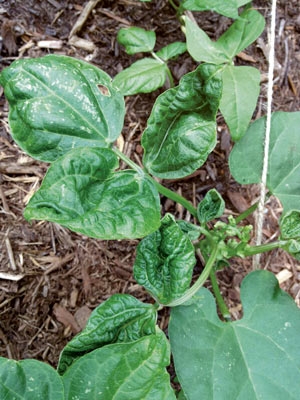To all the lovely people,
If you are one of the gardeners that buy your compost from outside sources this article from Organic Gardening will be of interest. If you are buying your compost ask for an analysis report.
Please write with any gardening (how to, worms and vermi culture, compost) questions. Yes, we have compost tea (ACT) for sale.
Paul
How to Test Compost for
Herbicide Contamination
Many communities provide free yard-waste compost to gardeners. Other gardeners make their own compost from manure and straw. But the use on lawns and pastures of persistent herbicides—weed killers that remain active even after going through a composting process—means the compost could contain chemicals harmful to plants.
That's what happened in the garden of Jeana Myers, Ph.D., and Will Hooker. Myers noticed a problem in summer 2012 after unknowingly using compost that was contaminated with weed-killer residue.
"I am not sure what herbicide was in our compost, but it was likely in the pyridine carboxylic acid group, which includes picloram, clopyralid, and aminopyralid as three of the more persistent compounds," says Myers. "We don't know if it came in on the bales of straw we purchased, on the horse manure, or both."
The herbicide residue affected plants in different ways. Pole-bean plants (shown at right) stayed small and bushy and failed to fruit. Tomatoes grew long and leggy with leaves that were cupped, twisted, and thickened. "Once you are familiar with the distorted look of the leaves, you can pick it out anywhere," Myers says.
Herbicides applied to lawns to control broadleaf weeds can be a source of contamination if the grass clippings are added to a compost pile or used as mulch. Even the composted manure of animals pastured on grasses treated with certain classes of persistent herbicides can harm plants. To avoid the contamination risk from compost of unknown composition, Myers suggests a simple bioassay test devised by Washington State University that can be done at home before adding the compost to your garden.
1. Fill three 3-inch pots with potting soil. Fill three more pots with a mixture of two parts compost and one part potting soil. Mark the pots.
2. Plant three pea or bean seeds per pot and keep them watered. Capture any water that drains from the pots so it doesn't contaminate soil in other pots.
3. Put the pots in a sunny, warm place. Once the seedlings have three sets of leaves, compare the plants growing in the compost mix with the control group in potting soil. Unusual cupping, thickening, or distortion of leaves signals the possibility of herbicide contamination in the compost.
"The levels damaging to plants only need to be parts per billion," Myers says. "The bioassay is a good idea even when you are buying a professional mix."
Attached Images:
